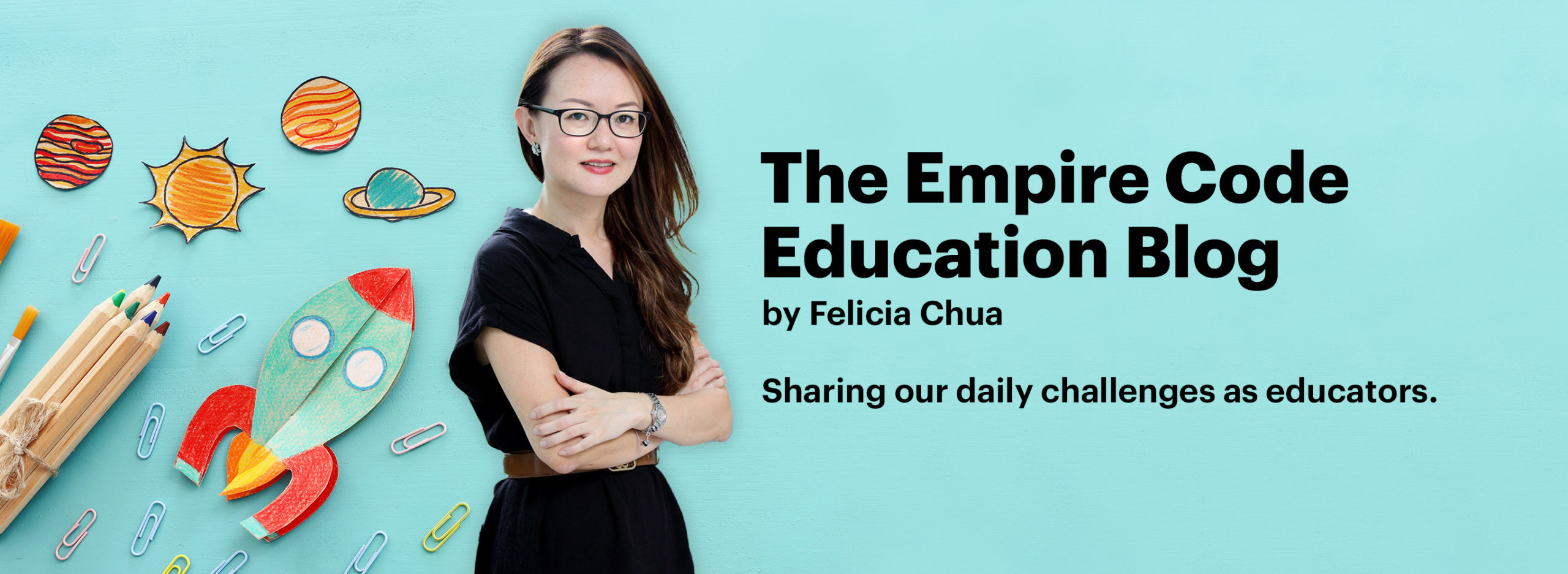In the last few years, the terms “Coding”, “Robotics” and “STEM” have become ubiquitous, and you’ve likely heard of it one way or another. With the rise of technology in the digital age, along with the plethora of coding and robotics enrichment programmes, the common question is “What’s the difference between these fields? Is it useful for my child’s educational journey?”. This post aims to share the key differences between coding, robotics and STEM, its crucial role in ensuring technical literacy, and how they can benefit your child’s education.

First off, what is Coding?
Coding is a language – we tell computers what to do using codes. You’ve probably heard of Python or Javascript, which are called syntax programming. In this current age, coding has been simplified, so that children as young as 4 can grasp the concepts with ease. Known as block-based programming, it aims to introduce computational thinking to very young learners, (thus building on their foundations), so that their progress to syntax programming at a later age (text-based languages), will be a more fluid process.
If you have heard of Scratch (the popular MIT software with the orange cat as its beloved mascot), it is a popular example of block-based programming. Children learn how to create their own animations and mini-games through dragging and dropping the code blocks. In addition to learning the various coding concepts, their brains are trained to think logically, computationally, and critically. We also teach students how to debug their codes independently; this stimulates the different areas of the brain, where they are trained to solve problems creatively, and view the obstacles through different lenses. For younger learners, progression from block-based programming such as Tynker and Scratch, is transitioned to game development modules such as Minecraft Education Edition, and Roblox Game Development; from here, students would then progress to more complex text-based programming languages like Python and C++. These languages open up a wide array of career opportunities – from web and app development to data science and machine learning.

Then, how about Robotics?
What comes to your mind when you first hear the term robotics? For most people, it is LEGO. However, robotics goes beyond just building a prototype. Robotics deal with designing and building robots, and utilisation of various sensors and motors, for optimal functioning. These sensors and motors are usually connected to a device, in which students learn programming to control the robots to create an action, so as to respond to a certain input. Hence, the line between coding and robotics is sometimes a bit gray. The main difference is that coding is mainly based on software, but robotics includes both software and hardware. However, both of these fields fall and interact under the STEM category.

What is STEM?
STEM (or STEAM) is an interdisciplinary teaching approach that unites the disciplines of science, technology, engineering (art,), and math into a single program. Although it emphasizes heavily on science and math, STEM is a very broad umbrella of different programs with the same goal – to provide students with engaging and hands-on methods of learning to develop science and math-based skills, so that they can gain 21st century skills such as communication, critical thinking, computational thinking, problem solving, and most importantly, contribute to a technologically-driven society.
Hence, coding and robotics also fall under this STEM category. Math and Science can be integrated into game development platforms as well as robotics. For example, you can learn chemistry concepts in Minecraft: Education Edition using their chemistry lab. Minecraft provides a variety of chemicals that work the same way as the real world, which allows for students to learn science concepts in a more fun and engaging way. In the same way, you can use LEGO SPIKE Prime (robotics) to create a robot that transfers energy from one place to another. Such projects also integrate engineering and science concepts, which are part of the school curriculum.
In other words, STEM education aims to go beyond the traditional academic approach and provides students the tools and opportunities to apply what they have learnt to solve real-world problems. For example, instead of learning the instructions for creating a robot, and the geography and physics of an earthquake, STEM education allows students to apply the knowledge to create an earthquake simulator using LEGO, for example, and tests how much force is required to make a LEGO brick house fall down. Projects like these allow students to use cross-disciplinary knowledge (from coding, to robotics and engineering) to solve problems creatively (for example, how can we make the foundation of the house stronger, so as to withstand the force of an earthquake).
Not sure where to start?
It depends on your child’s preference. Some students prefer robotics due to its hands-on learning nature, where they can see the physical result of their projects immediately. Coding, on the other hand, is intangible. However, you can create your own websites, analyze real-world data, and design your own mobile apps and games. Both of these disciplines still have the same goals in mind – to teach students the necessary 21st century skills and prepare them for the digitized future ahead of them.
In Empire Code, we offer modules across these different disciplines. You can let your child try out coding and robotics through our free trial classes. Contact us at +65 8154 5004 to find out more!
